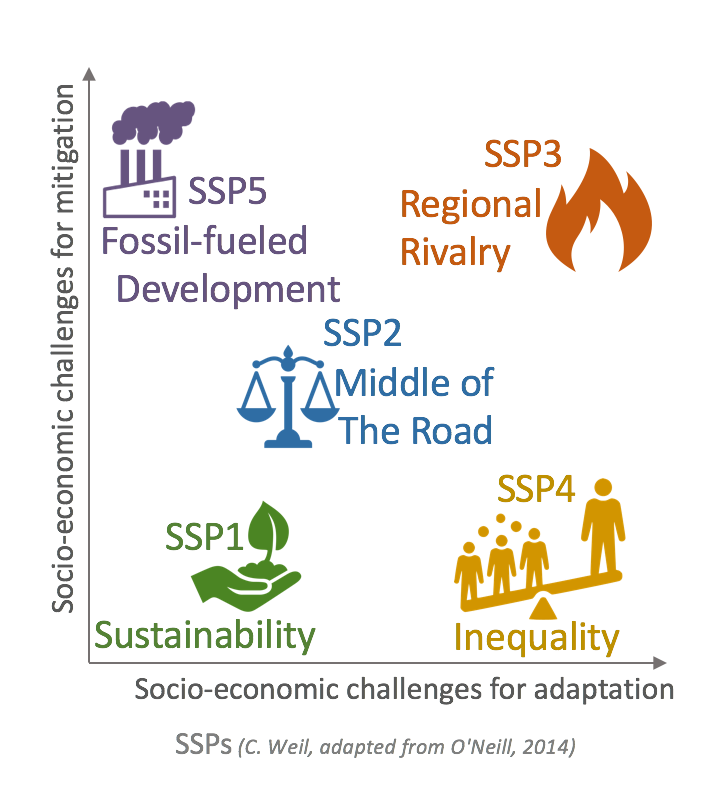Scenarios
We examine changes in these individual components of the NCP, from current (2015) conditions to future (2050) scenarios. We draw three contrasting scenarios from the Shared-Socioeconomic Pathways (SSP), paired with emissions scenarios from Representative Concentration Pathways (RCP), developed by IPCC and IPBES, that set future trajectories in land-use, climate and population change. We considered 3 scenarios:
-
The Sustainability scenario,(SSP1 paired with RCP 2.6) depicts a "Greener" world shifting gradually toward a more sustainable path, emphasizing more inclusive development (reducing inequalities) and respect for the environment.
-
The Regional Rivalry scenario (SSP3 paired with RCP 6.0) assumes resurgent nationalism, where countries’ concern with competitiveness and security lead to international conflicts. Economic development is slow, education and tech investments declines, inequalities worsen. Climate change is intense and there is strong environmental degradation in some regions.
-
The Fossil-Fueled Development (SSP5 paired with RCP 8.5) portrays a world where humanity takes the capitalist highway, with high faith in competitive markets, innovation and participatory societies. This world is increasingly globalized, with large investments in health, education, and socio-economic development in general. However, this occurs with vast exploitation of abundant fossil fuel resources and very consumerist lifestyles, and geo-engineering is viewed as the solution.




